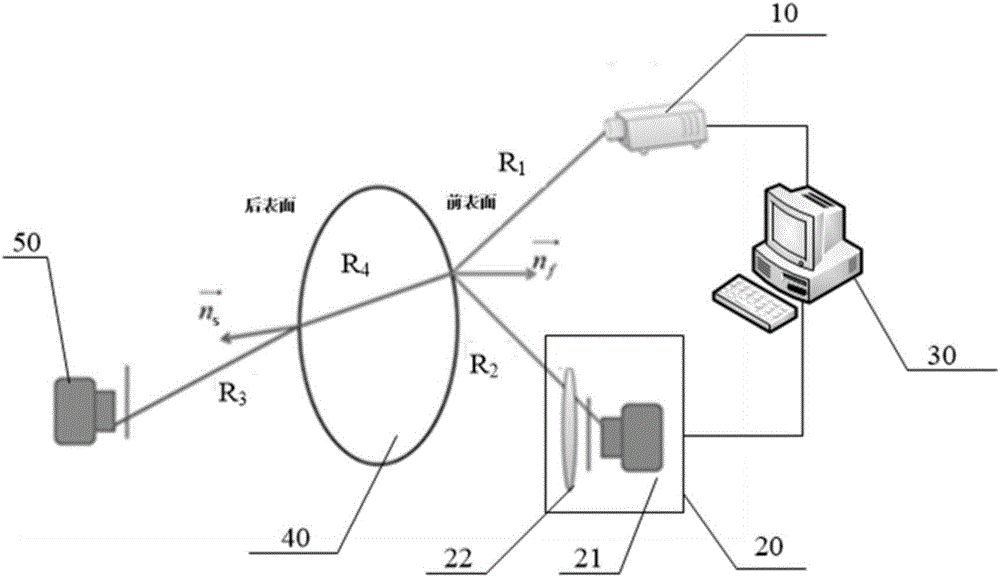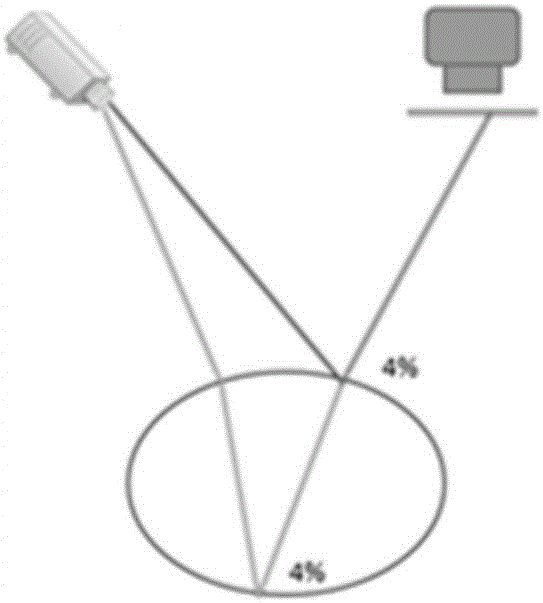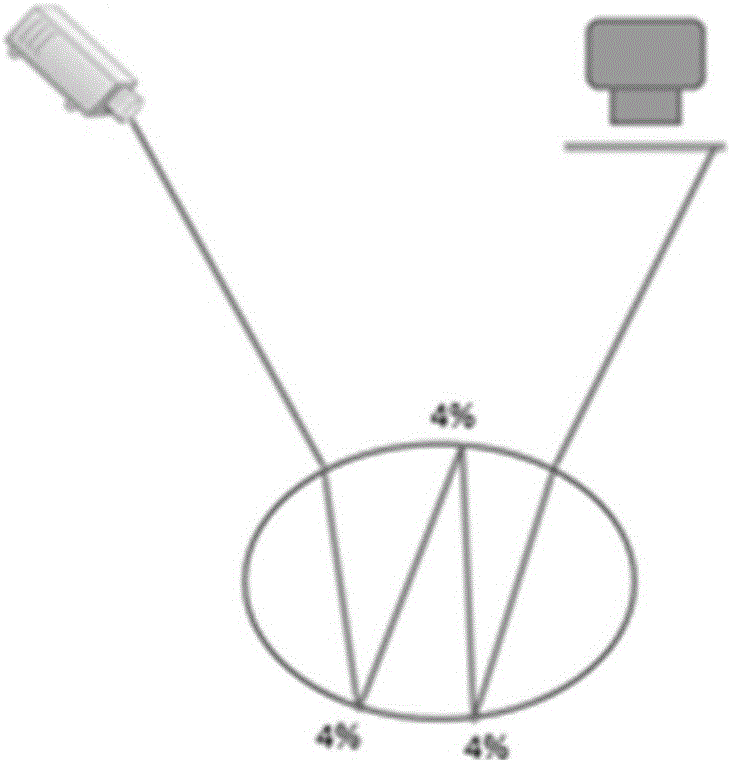Double-surface three-dimensional reconstructing method, device and system for transparent object
A 3D reconstruction and target technology, applied in the field of computer vision, can solve problems such as large amount of calculation and low efficiency
- Summary
- Abstract
- Description
- Claims
- Application Information
AI Technical Summary
Problems solved by technology
Method used
Image
Examples
Embodiment 1
[0085] figure 1 Schematic diagram of the structure of the double-surface three-dimensional reconstruction system for the transparent target provided by the embodiment of the present invention, as shown in figure 1 As shown, it includes: a light emitting end 10 , a first camera end 20 , a dual-surface three-dimensional reconstruction device 30 , a transparent target 40 and a second camera end 50 .
[0086] The system provided in this embodiment is used for three-dimensional reconstruction of the front surface and the back surface of the transparent object 40 . Wherein, the front surface and the rear surface are set opposite to each other.
[0087] Specifically, the light emitting end 10 adopts natural light as the incident light R in the form of a surface light source. 1 illuminating the front surface of the transparent target, on the one hand, the incident light R 1 A part of it is reflected by the front surface, denoted as reflected light R 2 , the other part is reflected...
Embodiment 2
[0097] In order to improve the reconstruction efficiency, in this embodiment and the previous embodiment, the light-emitting end 10 adopts a surface light source to output the incident light R 1 , to avoid the scanning process when using a point light source. Specifically, there are multiple pixel points on the light source plane of the light emitting end 10, which are called second pixel points to distinguish them from the first pixel points of the camera in the first camera end 20. The second pixel points on the light source plane emit The incident light R 1 , after being reflected by the front surface, the first camera terminal 20 receives the reflected light R 2 .
[0098] However, while the surface light source improves the reconstruction efficiency on the one hand, it also causes the reflected light R on the front surface 2 The problem of coincidence with the reflected light of the rear surface, so that the first camera end 20 not only receives the reflected light R o...
Embodiment 3
[0133] In order to clearly illustrate the aforementioned embodiment, the mentioned dual-surface three-dimensional reconstruction device 30, Figure 9 is a schematic structural diagram of a dual-surface three-dimensional reconstruction device 30, such as Figure 9 As shown, the dual-surface three-dimensional reconstruction device 30 includes: a light intensity calculation module 31 , a front surface reconstruction module 32 , and a rear surface reconstruction module 33 .
[0134] The light intensity calculation module 31 is used to, in the triangulation optical path, according to the relationship between the reflected light intensity of the front surface and the polarization angle, and the relationship between the reflected light intensity of the rear surface and the polarization angle, from the From the light intensity of each piece of reflected light at each polarization angle measured by the first camera end, determine the light intensity of each piece of reflected light on ...
PUM
 Login to View More
Login to View More Abstract
Description
Claims
Application Information
 Login to View More
Login to View More - R&D
- Intellectual Property
- Life Sciences
- Materials
- Tech Scout
- Unparalleled Data Quality
- Higher Quality Content
- 60% Fewer Hallucinations
Browse by: Latest US Patents, China's latest patents, Technical Efficacy Thesaurus, Application Domain, Technology Topic, Popular Technical Reports.
© 2025 PatSnap. All rights reserved.Legal|Privacy policy|Modern Slavery Act Transparency Statement|Sitemap|About US| Contact US: help@patsnap.com



